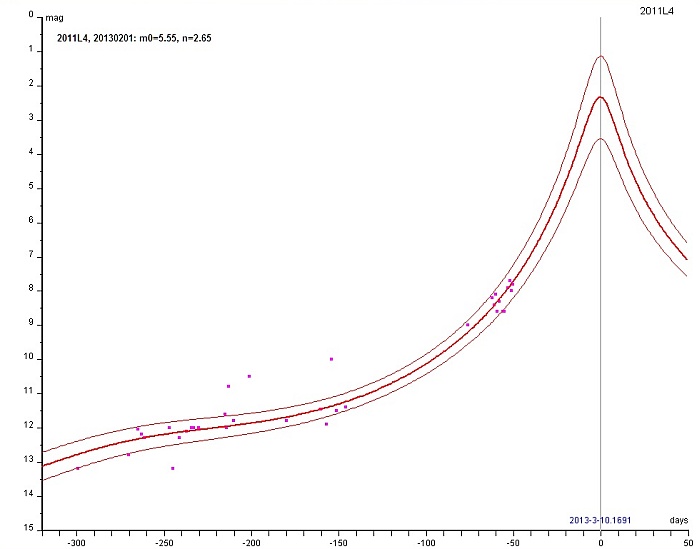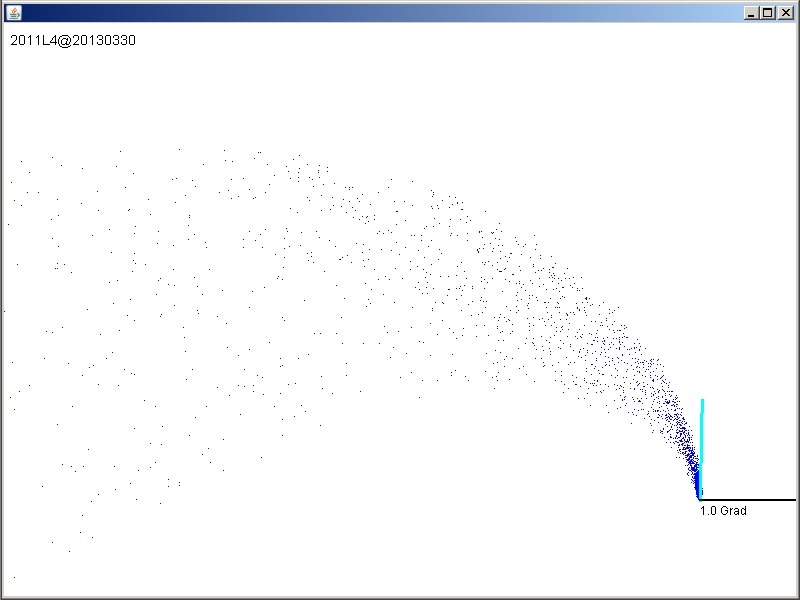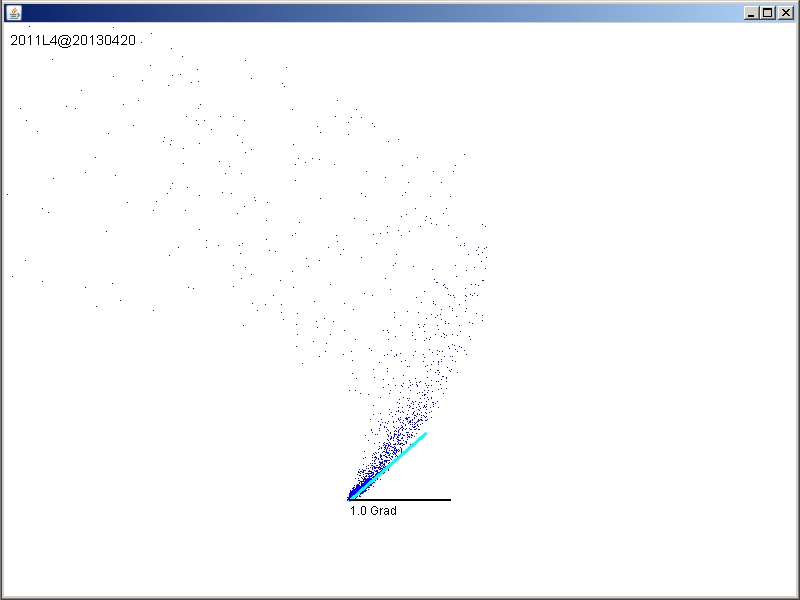
C/2011 L4 (PansSTARRS): Staubschweif ~ dust tail
Home=Aktuelle
Kometen | Die Fachgruppe | Anleitungen | Archiv |
Projekte+Publikationen | Kontakt
Home=Current Comets | The
German group | Tutorials | Archive |
Projects, publications | Contact
Zur Vorbereitung der Beobachtungen im März 2013 habe ich Simulationen des Staubschweifs angefertigt. Das Datum steht jeweils in den Bildern rechts oben, es sind ca. 10 Tage Abstand zwischen den Ergebnissen. Die waagerechte Achse ist die RA-Koordinate, die Deklination ist senkrecht. Der blaugrüne Strich gibt die Richtung des Gasschweifs an. Zum Gasschweif wurde nichts simuliert. Es ist einfach nur ein Strich fester Länge.
Uwe Pilz, 1. Februar 2013.
~
Please find appended simulation results about the PannSTARRS's dust tail. In the left upper corner you find the calendar data (after the comet's name). The RA coordiante is horizontal, declination vertical. The cyan line gives the direction of the ion tail. I did not make any simulations for the ion tail, it is only that line which gives the antisolar direction.
Uwe Pilz, February 1st., 2013
Für dynamisch neue Kometen wird oft ein Aktivitätsparameter von n=4 angenommen. Der erste Teil der Simulation beruht auf dieser Annahme. ~
Dynamically young comets often have a activity parameter of around n=4. In the first part I assumed PannStarrs to have this value.

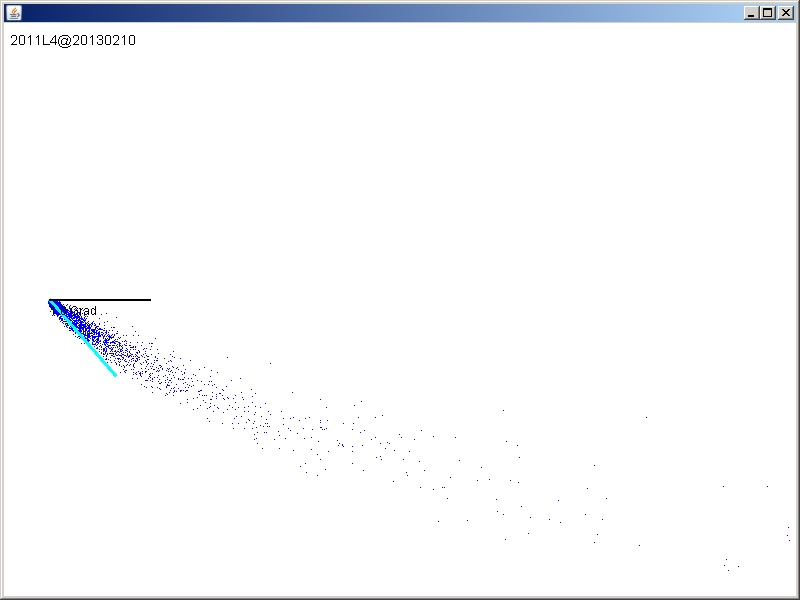
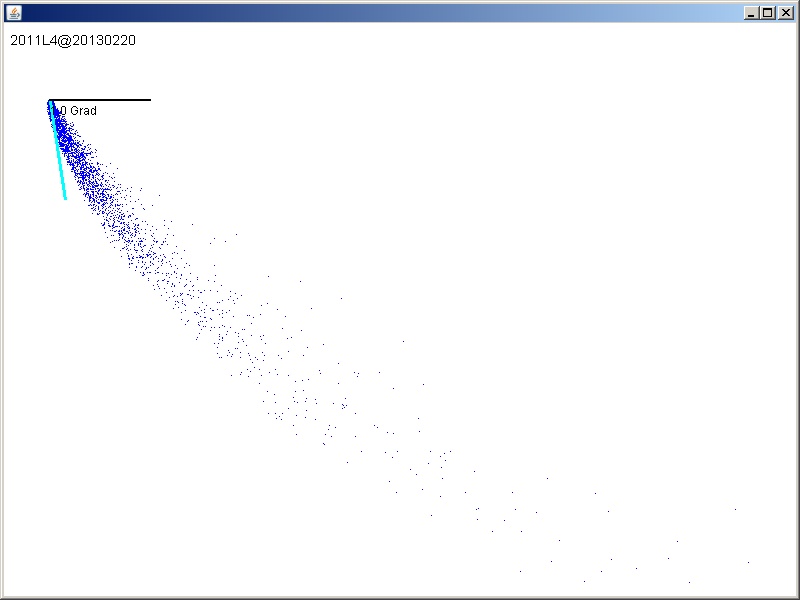
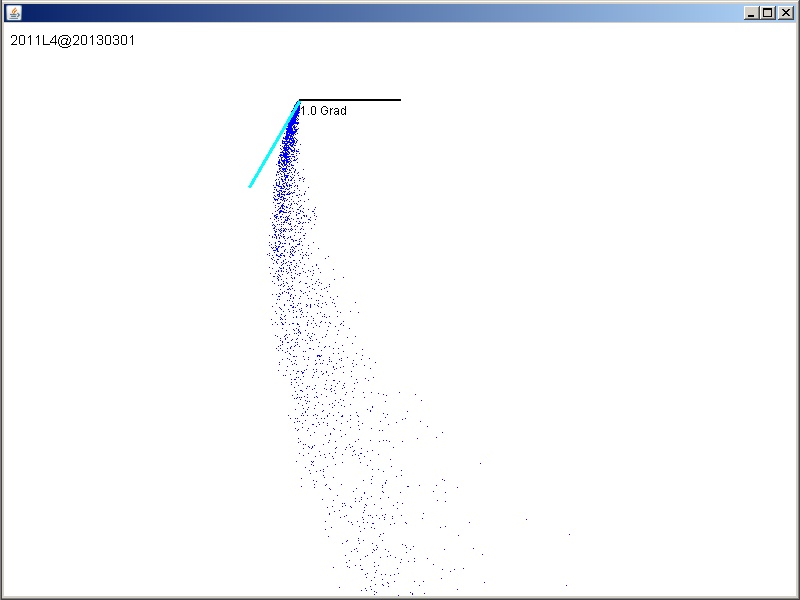
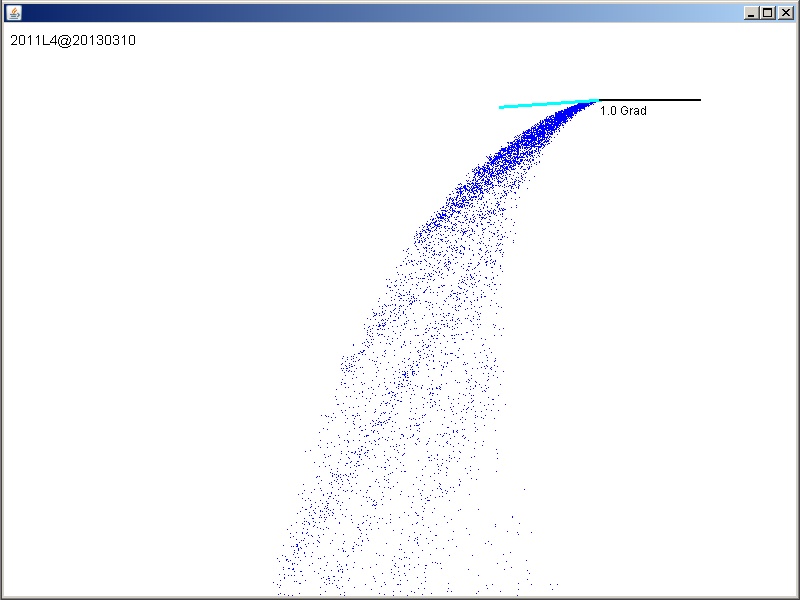

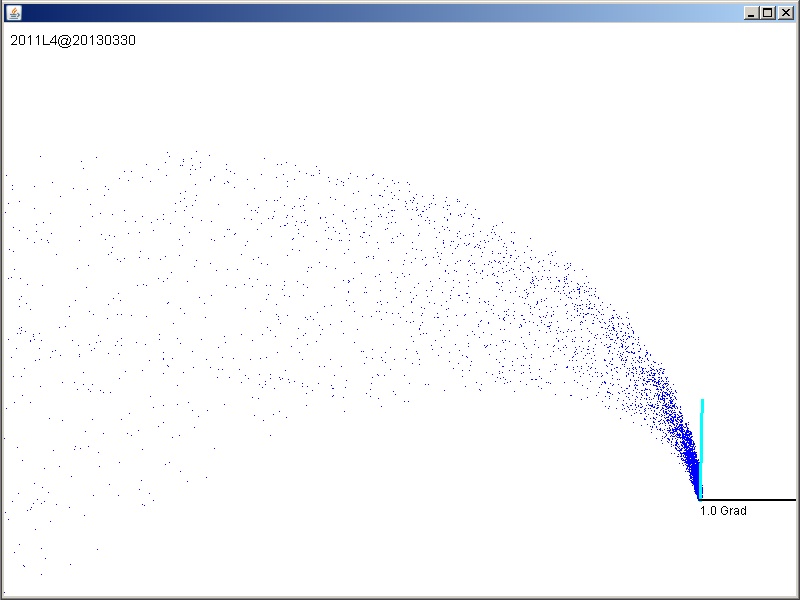
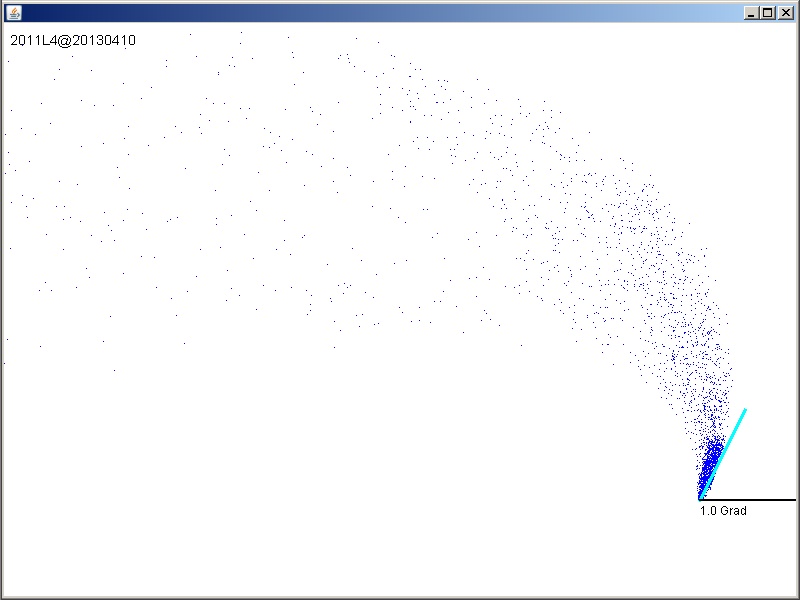
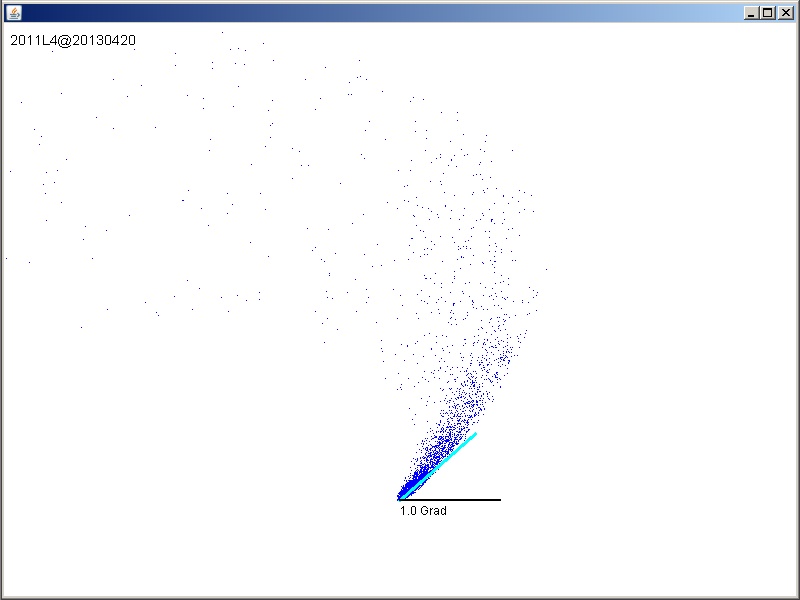
Simulationsergebnisse des Helligkeitsverlaufs ergeben einen viel schwächeren Aktivitätsparameter von n=2,7. Dieser Wert stimmt mit den Ergebnissen andererer Autoren weitgehend überein. Die Annahmen dieses Wertes führt zu einer deutlich schwächeren Staubentwicklung in der Nähe des Perihels. ~
Simulation results of visual observations indicate that n is lower than 4 and in the range of 2.7. Some other astronomers calculated similar values. This lower activity yields to a less dramatc dust production near the perihel.
